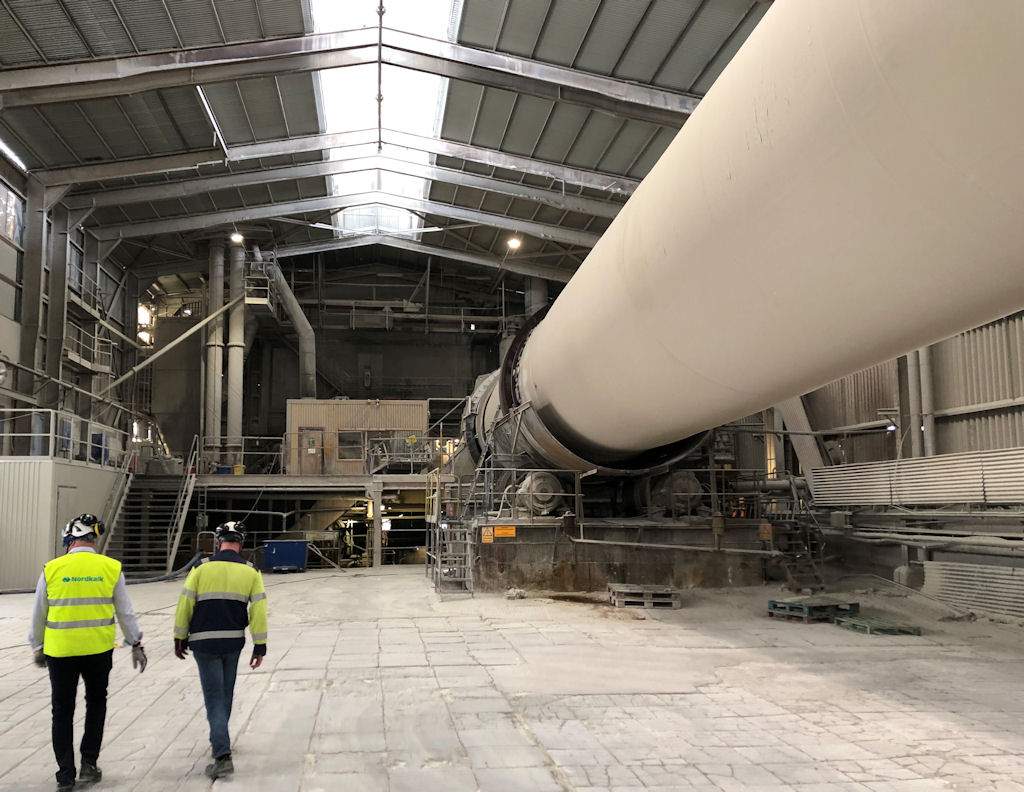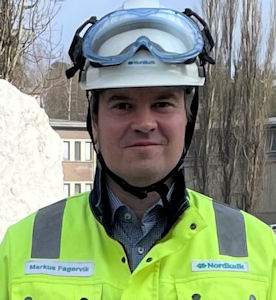
When we talk about Lime – which by the way is also known as Quicklime, Burnt Lime or even Unslaked Lime – we often also talk about CO2. This can be seen by numerous mentions in the previous posts in this blog series as well.
But why is that? Well, that’s because Lime production creates a lot of it. So let’s start by setting one fact straight: Lime production is carbon intensive. No question about that.
But why is that actually the case? Let’s begin by taking a look at the Lime production process itself.
The raw material for Lime is Limestone, a sedimentary rock that mainly consists of calcium carbonate. In order to make Lime out of Limestone it goes through a process known as calcination. The chemical reaction formula for this process is the following:
Here CaCO3 is the calcium carbonate and CaO is Calcium Oxide, the main chemical component in Lime.
The calcination process requires a very high temperature for it to start, normally close to 1000 °C. On top of that, the process is highly endothermic, meaning that it needs to be fed with lots of energy to keep it running. This energy is also provided in the form of heat. The calcination takes place in a lime kiln and it is a very energy intensive process.
In industrial scale lime kilns all of this thermal energy is provided by burning different fuels. If these fuels are of fossil origin the combustion of them will create fossil CO2. This happens when the carbon in the fuel reacts with the oxygen in the air (C + O2 -> CO2), just like in any other combustion process such as, for example, a fireplace or a car engine.
So there we have one source of carbon emission. But that is only part of the story. As the eagle-eyed among you might have noticed there was something in the reaction formula above which we so far did not address. Yup, there was a CO2-molecule in that reaction formula as well. And this CO2 does not come from the fuel, it comes from the raw material, the Limestone. The release of CO2 is an integral part of the calcination process. In fact, calcination is also known as decarbonisation.
By revisiting what we learned during high school chemistry lessons we can calculate that the production on 1 kg CaO will also release 785 grams of CO2 from the raw material. And this is regardless of the fuel used. In the lime industry these raw material based emissions are called process emissions and they are an inevitable result of the calcination reaction.
In typical industrial scale operations we can on average say that 1/3 of the CO2 comes from the fuel while 2/3 comes from the raw material.
What can we do to reduce the emissions?
What can the lime industry then do about this CO2? How can we reduce the emissions?
There are things that can be done and the methods can be split into four different categories. These four paths to lower emissions are:
The first path, i.e. improving energy efficiency is very natural. By consuming less energy you will emit less CO2. And you will save money as well. That said, the most efficient kilns already operate very close to the thermodynamic optimum and on those kilns there is not that much more to improve in terms of energy efficiency.
The second path involves using fuels with lower carbon intensity and other fossil-free energy sources. Examples of this are the use of biofuels and in the future possibly even renewable electricity or green hydrogen. Using biofuels can be challenging due to the different thermal characteristics they have compared to traditional fuels. Certain gaseous emissions can also become a problem in some cases.
The third path, namely CCS/CCU solutions, is the only way to address the raw material based process emissions. At the same time the fuel based emissions will be captured as well. Currently there are no commercial scale CCS-installations in the lime industry. The technological progress is, however, fast and we at Nordkalk are aiming for the first pilot scale solution already in 2025.
And finally, the fourth path involves developing alternative, new end products and recipes where the carbon footprint is lower than with traditional solutions. Our R&D team is working intensely to develop new products, many of which are based on circular solutions.
So here you have a short rundown of the basics of CO2 in lime production and what are the ways of reducing the carbon emissions. More on these topics will follow in future posts in this blog series. Stay tuned and join us on our journey towards fossil-free operations.
Markus Fagervik

Markus Fagervik, Energy, Environment and Quality Director in Northern Europe, likes working in a multi-disciplinary setting with a broad perspective, understanding the whole process from cradle to customer and striving for continuous improvement in all fields of sustainability.
“Being fairly familiar with all things Energy, the thing that energizes myself is when our great colleagues and partners come together and we as a team create something which we would not pull off as individuals.
The FFL Project – Towards Fossil Free Lime is a great example of this, each member providing their own expertise and making the whole stronger than the sum of its parts. It is clear that the team wants to push the boundaries beyond the conventional and really make a difference, something which is further backed up by the increased focus on sustainability we are seeing throughout Nordkalk.”
We use cookies to give you the best internet experience. By giving consent, you accept the use of cookies in accordance with our cookie policy.

When you visit any web site, it may store or retrieve information on your browser, mostly in the form of cookies. Control your personal Cookie Services here.